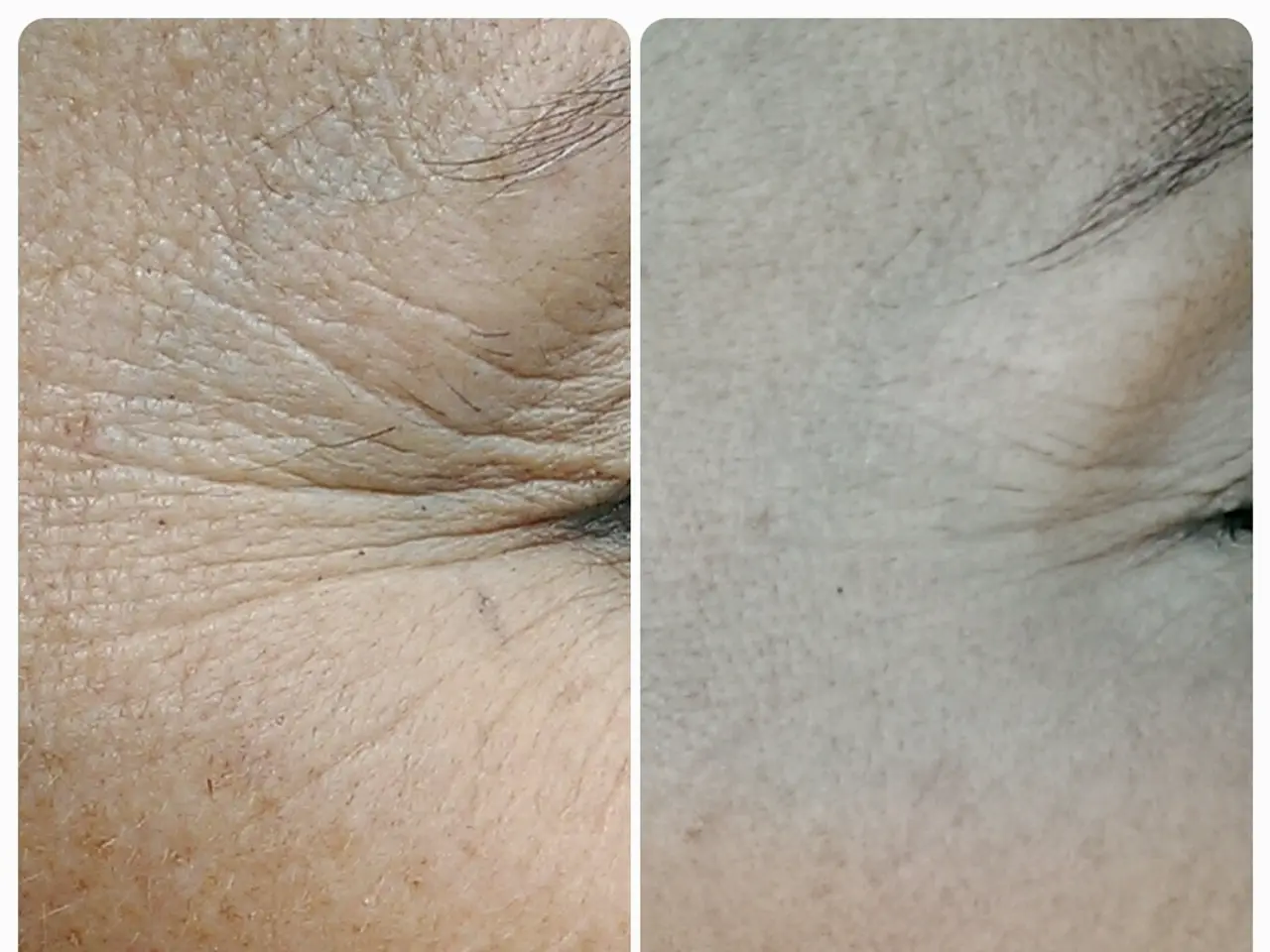Carbon Dioxide Laser: Applications, Advantages, Potential Risks
In the realm of skincare, various techniques are employed to combat signs of aging, acne scars, and sun damage. One such method is the use of CO2 lasers, which have become increasingly popular for their ability to rejuvenate and revitalize the skin.
The Power of Retinol and CO2 Lasers
Before delving into the specifics of CO2 lasers, it's worth mentioning two other skincare allies: retinol and chemical peels. Retinol, a form of vitamin A, may help improve acne scars, fine lines, wrinkles, and mild uneven skin tone. However, it's essential to exercise caution when using retinol at higher strengths, as these can cause undesirable effects such as skin irritation and sun sensitivity.
Chemical peels, on the other hand, are chemical solutions that may improve the skin's texture and tone by removing the damaged outer layers. They can be effective in treating acne or acne scars, fine lines, wrinkles, uneven skin tone, rough skin, scaly patches, sun-damaged skin, and certain other skin conditions.
CO2 Lasers: Traditional vs Fractional
When it comes to CO2 lasers, there are two main types: Traditional (non-fractional) CO2 lasers and Fractional CO2 lasers. Each has its distinct advantages and disadvantages.
Traditional CO2 Laser
Traditional CO2 lasers provide more aggressive and uniform skin resurfacing, making them ideal for deep wrinkles, severe scarring, and extensive sun damage. They yield dramatic, long-lasting results often in a single treatment and can sometimes substitute for surgical interventions like facelifts. The laser effectively stimulates collagen remodeling, tightening skin and improving texture and tone. However, traditional CO2 lasers have a longer recovery time with about 10-14 days of social downtime due to full ablation of the skin surface. There is also a risk of prolonged redness (erythema) lasting months and potential side effects such as pigmentation changes.
Fractional CO2 Laser
On the other hand, Fractional CO2 lasers deliver laser energy in a fractionated pattern, treating microscopic columns of skin while leaving surrounding tissue intact. This allows much faster healing, less downtime, and reduces risks of side effects like prolonged erythema or post-inflammatory hyperpigmentation. Fractional lasers are effective for fine lines, moderate wrinkles, pigmentation, texture, and atrophic scars with minimal downtime (erythema resolving in 1-2 days). However, they are less aggressive than traditional lasers, so multiple treatments may be required to achieve desired results. They are generally not sufficient for very deep wrinkles or extensive skin damage.
Choosing the Right Laser for You
In summary, Traditional CO2 lasers are better suited for patients needing deep, full resurfacing but come with longer recovery and higher downtime, while Fractional CO2 lasers offer a safer, less invasive alternative with quicker healing and lower risk of side effects, albeit often requiring multiple sessions for optimal results. The choice depends on individual skin conditions, desired outcomes, and tolerance for downtime.
It's essential to note that CO lasers are tools used by healthcare professionals for skin resurfacing therapies, and the length of treatment depends on a person's skin type, skin concern, and the manufacturer's instructions. The average cost of CO2 laser treatment is $1,829, according to the American Society of Plastic Surgeons. Results from CO laser treatment can last for many years, but natural skin aging will continue, leading to recurring fine lines and wrinkles.
During recovery, a person may be advised to stay at home, avoid strenuous activity, not pick or scratch at the skin, use over-the-counter pain medication or ice packs, minimize direct sun exposure and use sunscreen, attend follow-up appointments, and take any prescription medication as directed. Collagen, a protein that contributes to the skin's elasticity, plays a crucial role in the healing process, with new skin forming that is smoother, tighter, and more elastic.
In the end, understanding the various skincare techniques available, such as retinol, chemical peels, and CO2 lasers, can empower individuals to make informed decisions about their skincare routines and treatments. Consulting with a healthcare professional is always recommended to determine the best approach for each unique situation.
[1] J Drugs Dermatol. 2013 Jul;12(7):715-20. [2] J Cosmet Dermatol. 2001 Jun;2(2):91-7. [3] Lasers Surg Med. 2004 Mar;35(3):185-93. [4] Dermatol Surg. 2007 Jan;33(1):72-8. [5] Dermatol Surg. 2009 Jan;35(1):11-6.
- Science in the medical field has led to the development of predictive models that can help identify individuals susceptible to various health-and-wellness conditions, such as colitis, asthma, or cancer, based on genetic markers and lifestyle factors.
- In addition to their applications in skincare, CO2 lasers can be used in medical-conditions treatment, particularly for chronic diseases like ulcerative colitis or Crohn's disease, where they may help stimulate healing and reduce inflammation.
- Retinol, with its potential to improve the appearance of acne scars, fine lines, wrinkles, and mild uneven skin tone, has also shown promise in predicting the risk of some skin cancers due to its role in promoting cellular growth and repair.
- The use of AQ-based skincare products, popular for their hydrating and soothing qualities, might play a role in protecting the skin against the development of some skin cancers, aligning with the overall health-and-wellness focus.
- When exploring treatment options for skin-care needs, it's crucial not to overlook the benefits of chemical peels in addressing conditions like acne, acne scars, sun damage, and certain other skin conditions.
- Collagen, a protein essential for maintaining skin health, can serve as a predictor of the skin's aging process, making it a valuable target for future skincare research and development focused on anti-aging and health-and-wellness improvements.




